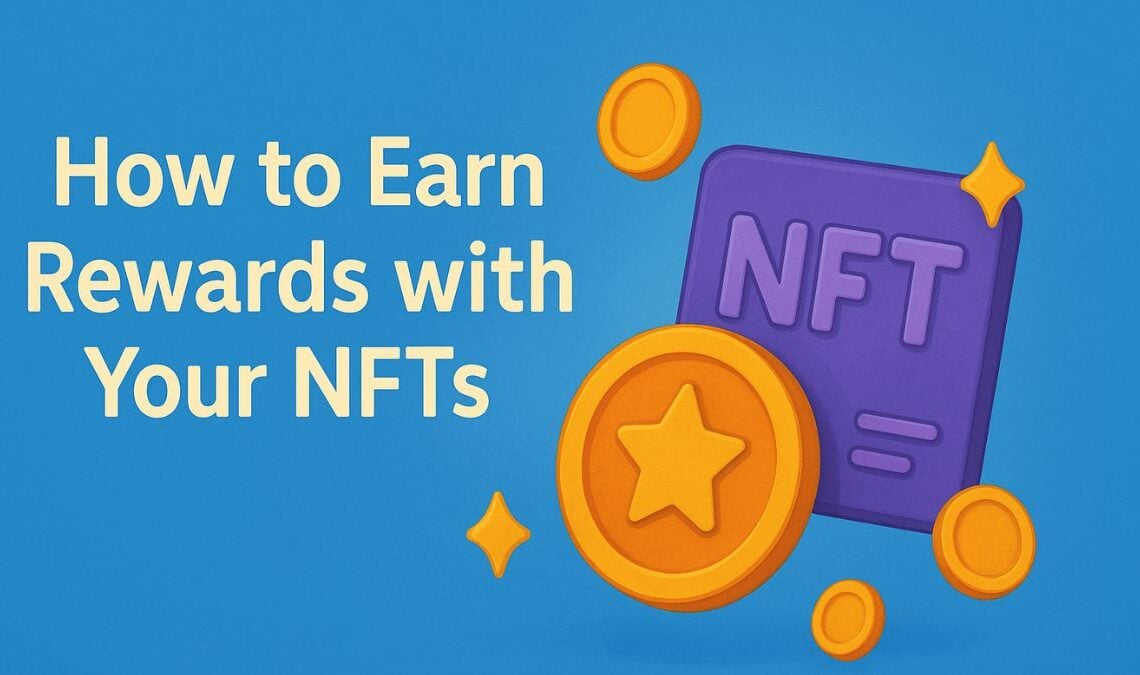In the ever-expanding world of crypto, NFT staking has emerged as a promising way to earn passive income without selling your digital collectibles. While most people associate NFTs with art or gaming, staking gives them a utility that goes beyond ownership—turning your idle assets into yield-generating tools.
In this guide, we’ll explore what NFT staking is, how it works, and which platforms support it in 2025. Whether you’re holding blue-chip PFPs or gaming NFTs, staking could unlock new ways to maximize your portfolio’s potential.
What Is NFT Staking?
NFT staking is the process of locking up your NFTs on a platform or protocol in exchange for rewards, often in the form of native tokens. Unlike selling or trading NFTs, staking allows you to keep ownership of your assets while putting them to work.
Think of it as renting out a house—you don’t lose the deed, but you earn while it’s being used. In this case, you “rent” the NFT to a protocol that leverages its utility within a broader ecosystem.
How Does NFT Staking Work?
While details vary by project, the general mechanics are fairly consistent:
- You connect your wallet to a staking platform that supports your NFT collection.
- You stake (lock) your NFT for a fixed or flexible period.
- In return, you earn rewards—usually in the form of the platform’s native token or additional benefits (like governance rights or in-game perks).
Some platforms also offer dynamic rewards, meaning your earnings depend on traits, rarity, or how long the NFT is staked.
Why Stake NFTs?
There are several reasons users choose to stake NFTs:
- Passive Income: Turn non-yielding assets into income-generating ones.
- Added Utility: Enhance the functionality of NFTs by integrating them into DeFi ecosystems or GameFi mechanics.
- Incentives for Holding: Encourage long-term engagement with a project rather than short-term flipping.
- Exclusive Access: Many platforms reward stakers with whitelist spots, airdrops, or governance power.
Common NFT Staking Platforms in 2025
While the space is still evolving, here are some typical categories of platforms offering NFT staking:
- GameFi Platforms: Games like Axie Infinity, The Sandbox, or newer Telegram-based titles allow players to stake character NFTs for in-game rewards or governance tokens.
- PFP Ecosystems: Some blue-chip NFT collections offer staking to reduce supply volatility and reward loyal holders.
- DeFi Protocols: Projects like NFTX let users pool NFTs into vaults and earn yield from liquidity provision or governance incentives.
Each has different lock-in periods, reward rates, and requirements, so it’s important to read the terms carefully.
Risks to Consider
As with all DeFi-related tools, NFT staking isn’t risk-free:
- Smart Contract Vulnerabilities: Staking platforms can be exploited, potentially resulting in lost assets.
- Platform Longevity: If a project fails or loses community support, rewards may become worthless.
- Liquidity Constraints: Staked NFTs are often locked for a set period, meaning you can’t trade or sell them during that time.
- Overvaluation: Some platforms offer high rewards that might not be sustainable, inflating token value temporarily.
Always DYOR (Do Your Own Research) before staking NFTs, especially when dealing with new or unverified platforms.
Final Thoughts: Is NFT Staking Worth It?
In 2025, NFT staking is more than just a buzzword—it’s an emerging pillar of the digital economy. By giving NFTs tangible utility beyond aesthetics or gaming, staking creates a bridge between ownership and productivity in the Web3 world.
If you’re holding NFTs that support staking, it’s worth exploring how to put them to work. Just remember: while the rewards can be attractive, they come with trade-offs. Stay informed, secure your assets, and choose platforms that align with your goals.
Done right, NFT staking can be a smart strategy to grow your crypto holdings while staying active in the projects you believe in.
















